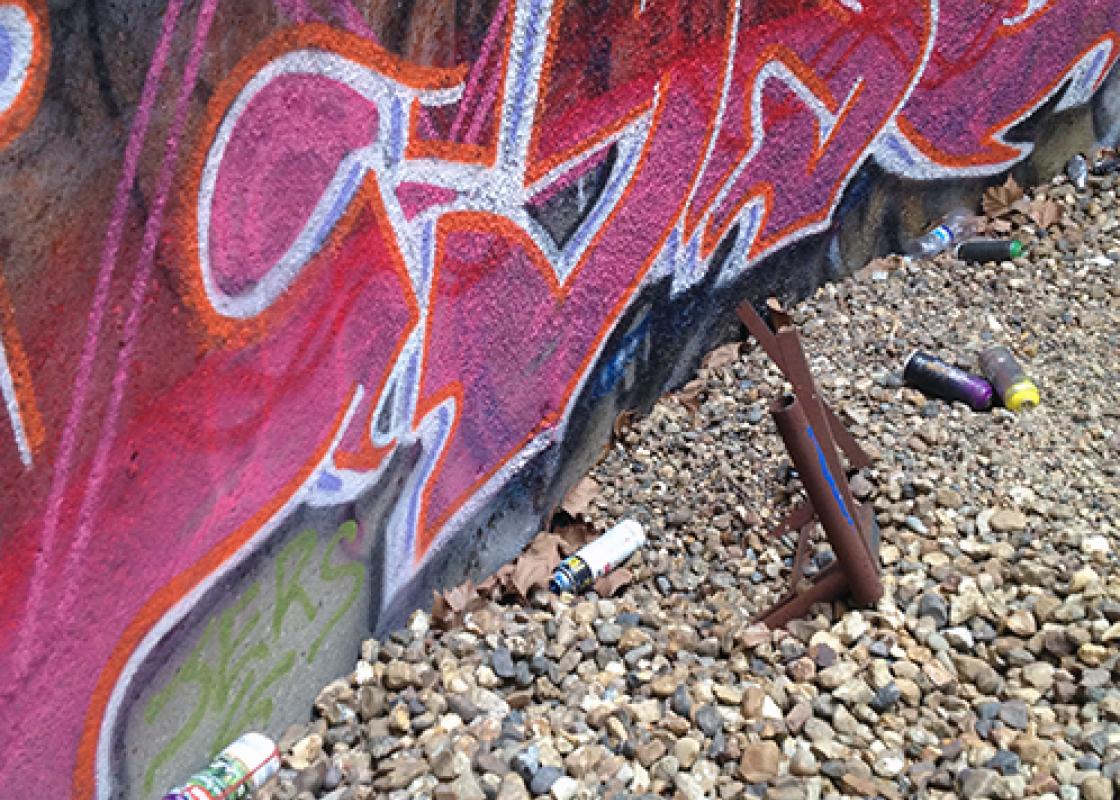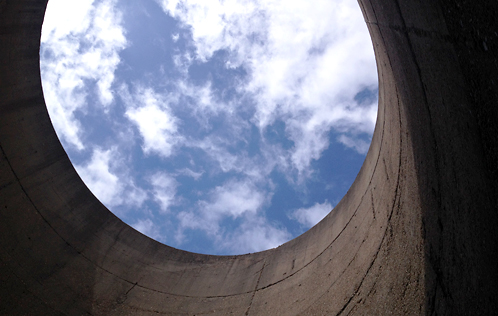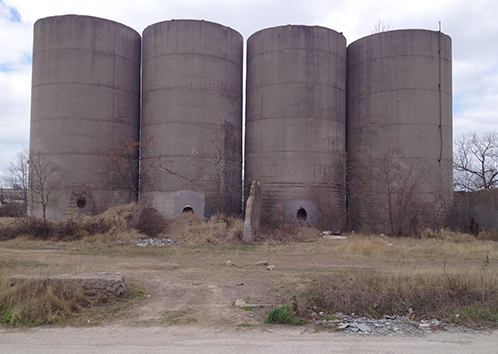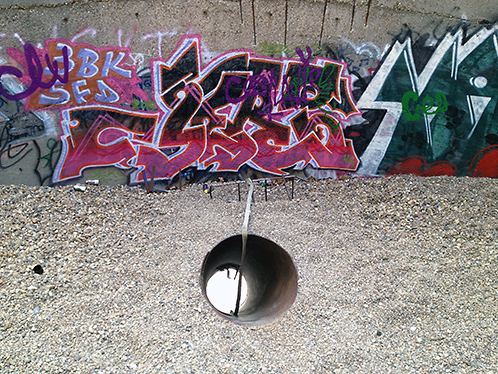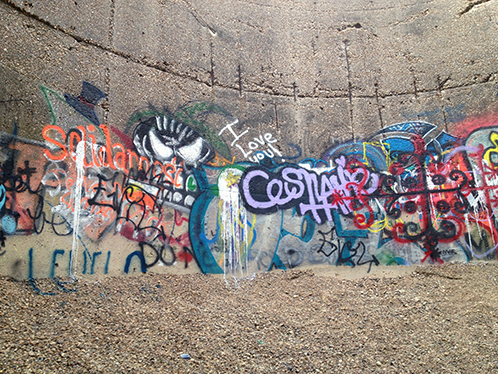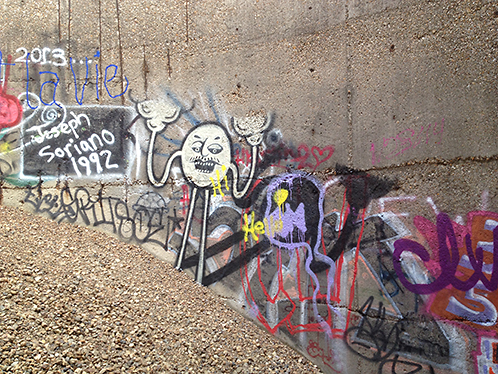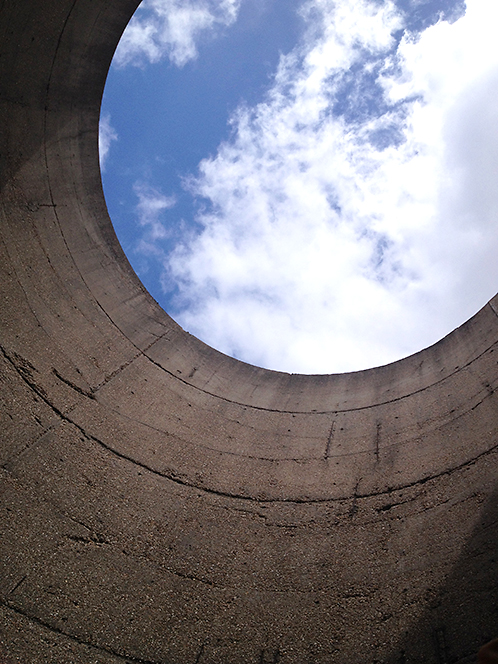OffCite invites short essays, reviews, and observations on specific moments and places. Interested in contributing your own? Let us know.
The gravel silos stand in a row. Vines snake up one side; newer gray rectangles of paint cover up the surfaces that kids with cans can reach. The silos might be familiar to you: David Theis explored them in an essay that appeared in Cite 87; Luke Savisky projected experimental video on them in 2010; the Buffalo Bayou Partnership (BBP), which now owns them and the land they stand on, thought they might make good climbing walls back in 2006, when the BBP first set about acquiring the easements to build these few miles of hike and bike trail east of Downtown along the Ship Channel.
My wife and I call those few miles the Secret Trail. You don't see that many other users out and about, but it's not really a secret. Still, you can have the whole thing to yourself for hours. You could pop a tire --- and then what?
Leaving the trail, I pedaled around a boulder and coasted toward the base of the silos. I made my slow tour. On the eastern side, facing Nagle Street, are steel chutes down which the gravel, at some point, must have slid. Three of these are closed off. One, though, allows you to peer inside.
It looks like a portal, a wormhole, some transportational orifice. Moving closer, I saw a thick canvas strap lolling inside like a tongue, the end of it dangling enticingly maybe seven feet above. How about that, I thought. I checked over my shoulder, double-checked, stymied a whoop, then lay flat on my belly and squirmed up into the chute until I could grasp the strap and pull myself along. The diagonal orientation was steep --- a 45-degree angle, at least. I went hand over hand the rest of the way up, playing tug-of-war with gravity.
When I emerged after this 10- or 15-foot climb, I scrambled to my feet and sunk a few inches into the loose gravel that had settled into the bottom of the silo. It wasn't clear whether the gravel had sunk, or risen, to this level. The dusty, lunar-like topography of it was uneven, the air cool. Much of the interior had been painted in a panorama of weird cartoons and elaborate tags, one dating back to 1992.
And then I looked up! The perfect circle of the concrete walls was warped into an ellipse that framed the sky. I was thinking of Twilight Epiphany, the James Turrell Skyspace at Rice; I was peeved for a moment that Turrell's ubiquity had hijacked my imagination, as though I were committing copyright infringement just stumbling into a view like this. And this view was more humdrum, of course, less produced. The choreographed mise en scène that Turrell wraps you in there is replaced here by the heady feeling of improvisation, the grit of rust and dirt, the lingering sting in your hands from that strap.
Was this an infringement, though? These silos are owned by the BBP, but who has the right to them? Was I trespassing? I'd like to think that this little expedition was something else, something more like what those urban spelunkers undertake, crawling along culverts or exploring sewers in the spirit of discovery. But who am I kidding? I was worried my weight might cause the compacted gravel to shift and avalanche and plug up the chute, leaving me trapped, a baby in the well. Then what? And I had to be home in time for Downton Abbey. I allowed myself a few moments more before sliding down the chute the way I would when the whistles blew at the end of recess, and there was a single-file line I knew I had better fall into.
More >>>
Read Alexandra Lange's review of Twilight Epiphany, which appeared originally in Cite 92; read all CiteSeeing posts.


